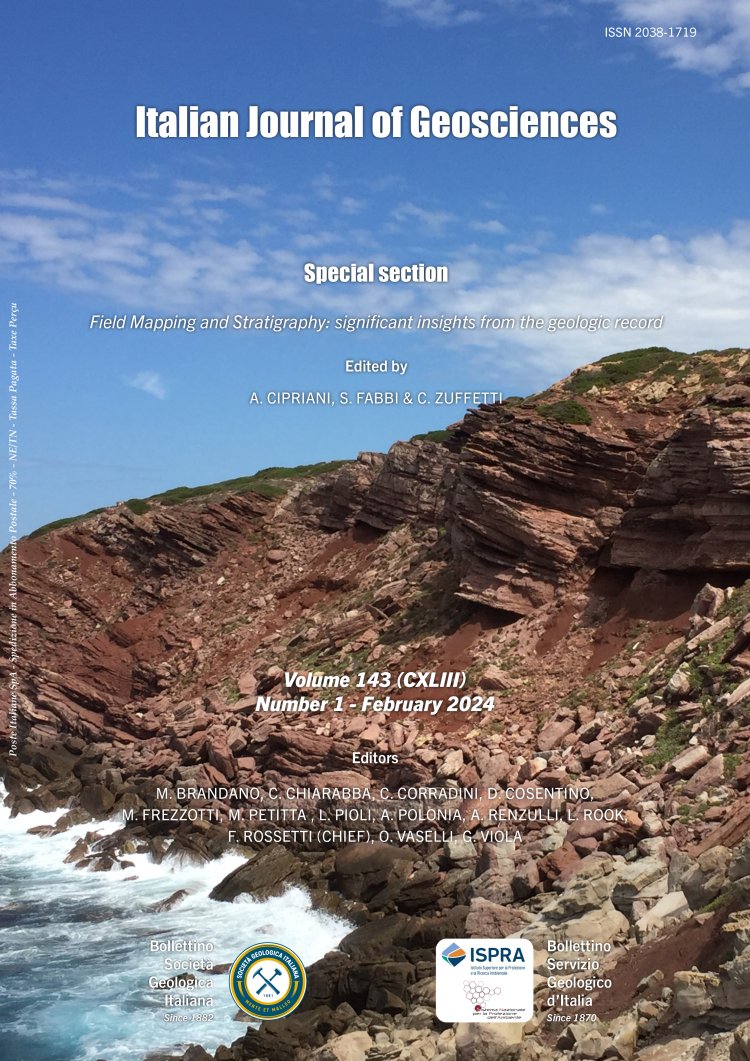

Geometry and stratigraphic relationships of lower Oligocene coral reefs in Lumignano (Berici Hills, northern Italy)
Filippo Tusberti1,2, Federica Chimento1, Marco Brandano3, Anna Breda1, Matteo Massironi1, Maria Luisa Perissinotto4, Laura Tomassetti5 & Nereo Preto1
1University of Padova, Department of Geosciences, via Gradenigo 6, 35131 Padova, Italy.
2INAF - Astronomical Observatory, Vicolo dell’Osservatorio 5, 35122, Padova, Italy.
3Dipartimento di Scienze della Terra, Sapienza Università di Roma, P. Aldo Moro 5, 00185, Roma, Italy.
4Regione del Veneto - Direzione Difesa del Suolo e della Costa, U.O. Servizio Geologico e Attività Estrattive, Calle Priuli Cannaregio 99, 30121
Venezia, Italy.
5Servizio Geologico d’Italia-ISPRA, Via Vitaliano Brancati 48, 00144, Rome, Italy.
Corresponding author e-mail: nereo.preto@unipd.it
Volume: 143 (2024) f.1
Pages: 25-36
Abstract
The Cliffs of Lumignano (Northern Italy) are a renowned climbing area, set on the steep walls of lower Oligocene limestones of the Castelgomberto formation which are made mainly of coral boundstone. Lumignano lies approximately on the south-eastern margin of a Cenozoic carbonate platform known as the Lessini Shelf, but the depositional environment of coral reefs is still debated, and it is unclear whether it was a Caribbean-type carbonate platform with a lagoon and steep slope, or a carbonate ramp with coral reefs on the mid ramp. We produced a geological map of the Lumignano area, in which five lithofacies are distinguished and mapped within the Castelgomberto formation. Their spatial distribution and main sedimentological characters outline that landward of coral reefs, a high-energy environment was present and was shallower than the reefs. Seaward of coral reefs, coralline algae and marlstones with bryozoans occur, while no evidence of a slope made of coral rubble was found. Hence, the detailed geological mapping and the documentation of the stratigraphic relationships between lithofacies provided a valuable contribution to the understanding of depositional environments of the lower Oligocene Lessini Shelf. This work also suggests elements for a better definition of the Castelgomberto formation, which could be split in members or lithofacies that can be mapped at a reasonably large scale (1:10000). The coralline algal lithofacies of the Castelgomberto formation is locally indistinguishable from the analogous facies of the underlying Priabona formation, but the boundary between these two units is always marked by an unconformity, which is easy to identify and may be used for the lithostratigraphic definition of the Castelgomberto formation.
Keywords
Get Full Text Supplementary Material